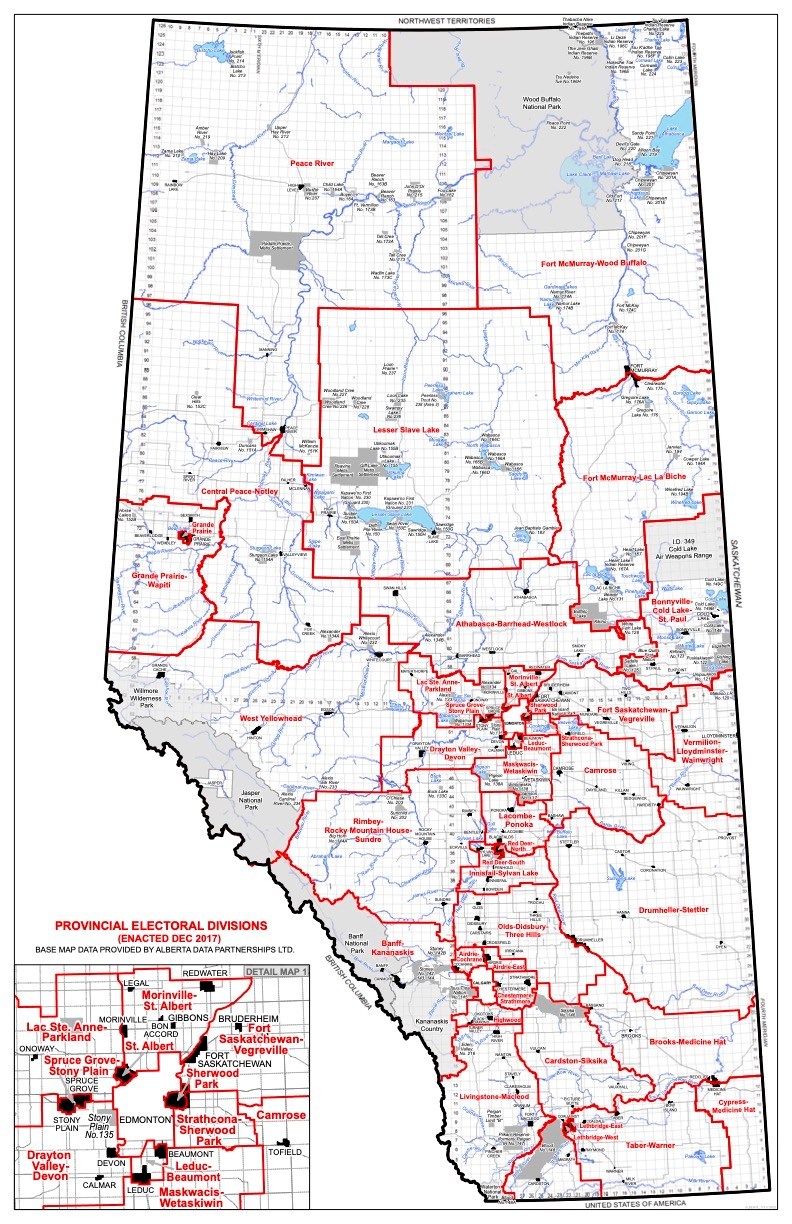Alberta’s electoral boundaries are up for review before the next provincial election, and Athabasca-Barrhead-Westlock MLA is urging to commission to think twice before increasing the size of the provinces “true rural” ridings.
MLA Glenn van Dijken spoke with the electoral boundary commission during a June stop in Westlock, and again with Town and Country This Week after comments from his fellow MLAs brought attention to the issue.
“It’s important to recognize the value of proper representation to the entire province,” said van Dijken in a Aug. 13 interview.
“If we’re unable to meet that criteria of effective representation equally across the province, it’s a disservice to everyone in the province.”
Per the Electoral Boundaries Commission Act, ridings may not be more than 25 per cent below or above the provincial average, which is currently 54,929 registered voters per riding.
Currently, the Athabasca-Barrhead-Westlock riding has 46,782 registered voters, 14.8 per cent below the quotient. Instead of expanding the riding, which already spans from Swan Hills to Mallaig, a distance that takes roughly four hours to drive across, van Dijken encouraged the commission to consider shrinking it to be closer to 25 per cent below the quotient.
“My discussion with (the commission) was essentially, let’s recognize that we have, in big urban areas, we’ve got more MLAs representing the city of Edmonton then there are councillors in the city. That makes no sense to me,” said van Dijken.
Currently, Edmonton has 20 MLAs and 13 municipal representatives and the city of Calgary has 26 MLAs and 15 municipal representatives.
“For those ridings, they could easily target 20 to 25 per cent above, so around 60,000 (voters), and then we’ve got workable constituencies.”
van Dijken also differentiated between what he calls true rural ridings, including his own and constituencies like Lesser Slave Lake and Fort McMurray-Lac La Biche, which are even bigger, and ridings that border on cities, including Red Deer or Grande Prairie.
“In ridings like mine, or West Yellowhead, Rimbey-Rockey Mountain House …. They turn into very large geographical areas that become very hard to manage with just one person.”
While the size is an issue, van Dijken said the larger problem is the number of different municipalities, school boards, and industries he is charged with representing. In the Athabasca-Barrhead-Westlock riding there are six school divisions, nine counties, seven towns, four villages and nine summer villages, all of which have elected representatives.
Past the other politicians, each of the region’s major industries have different concerns as well. An agricultural business in Barrhead will be asking different questions than Al-Pac will in Athabasca, and it can pull the MLA in many directions at once.
“There’s work that has to be done in trying to ensure that regulations that are being brought on them are reasonable, and recognize the jurisdictional differences that are being put on Canadian industry versus their competitors in other countries,” said van Dijken.
“If we lose the voice of all these industries at the table, and just become a voice of the service industries, that makes us weaker in the long run.”
For the next provincial election, the boundary commission is increasing the number of seats by two, rising from 87 to 89 across the province, so it’s unlikely major changes will happen in Alberta’s rural ridings. Population growth in Calgary and Edmonton has left multiple ridings, including Edmonton-Ellerslie and Calgary-North East at more than 48 per cent above the quotient, and the commission is unable to increase the seat totals above what the government sets.
Instead, van Dijken used the Westlock meeting to ask the commission board to avoid expanding the boundaries further; the riding of Bonnyville-Cold Lake-St Paul is only two per cent below the quotient and it’s possible re-districting would balance the two.



